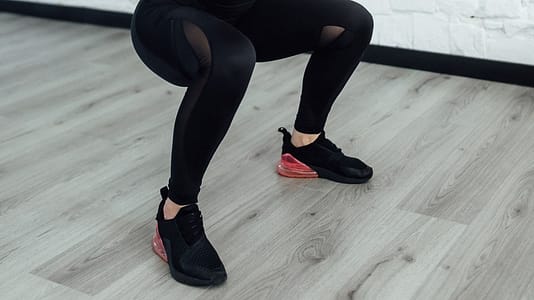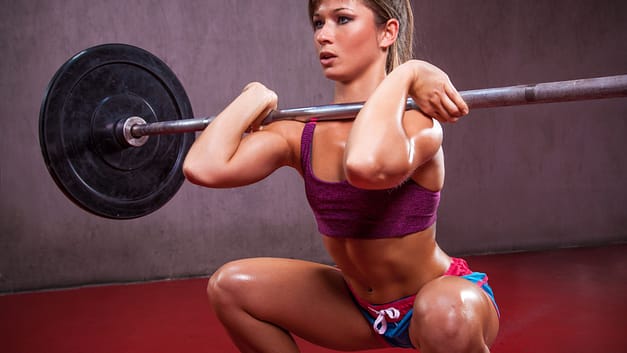Table of Contents
ToggleSquat Variations for Targeting Hip Flexors and Medius:
1. Sumo Squats:

Sumo squats involve a wider stance, which places more emphasis on the inner thighs (adductors) and activates the hip flexors differently than traditional squats. This variation engages the hip abductors, including the medius.
2. Split Squats:
Performing split squats with an elevated rear foot activates the hip flexors intensely. The unilateral movement isolates each leg, allowing for a more targeted engagement of the hip flexor muscles.
3. Front Squats:
Front squats shift the center of gravity forward, requiring more upright posture. This variation activates the core and forces the hip flexors and adductors to work harder to stabilize the body, especially during the ascent.

4. Bulgarian Split Squats:
Like split squats, this variation focuses on one leg at a time but adds an element of instability due to the rear leg being elevated. It intensifies hip flexor engagement while challenging balance and stability.

Important Tips:
Proper Form: Regardless of the variation chosen, maintaining proper form is crucial to avoid injury and maximize muscle engagement.
Range of Motion: Focus on achieving a full range of motion while keeping tension on the targeted muscles.
Progressive Overload: Gradually increase resistance or difficulty to continue challenging the muscles for growth and strength development.
Remember, while these variations are great for targeting the hip flexors and medius, a well-rounded workout routine that includes various exercises will yield the best results. Listen to your body, start with proper warm-ups, and gradually progress in intensity to avoid strain.
So.
Incorporating these squat variations into your routine can effectively target the hip flexors and medius while contributing to overall lower body strength and stability. Always consult a fitness professional or trainer for personalized guidance based on your individual needs and goals.
Let’s delve deeper into the benefits and intricacies of these squat variations targeted at the hip flexors and medius for a 31-year-old female looking to enhance lower body strength and stability.
Understanding the Importance of Hip Flexors and Medius:
Hip Flexors:
The group of muscles responsible for flexing the hip joint is collectively known as the hip flexors. These muscles play a pivotal role in daily movements like walking, running, and climbing stairs. Strengthening the hip flexors not only improves mobility but also supports core stability and posture.
Hip Medius:
The hip medius is an essential muscle located on the outer part of the pelvis. It aids in stabilizing the pelvis during movement, contributing to hip and knee alignment. A strong medius helps prevent injuries and improves overall lower body function.
Benefits of Targeting These Muscles:
Improved Mobility: Strengthening the hip flexors enhances flexibility and range of motion, benefiting various activities involving hip movement.
Injury Prevention: A robust medius stabilizes the pelvis, reducing the risk of injuries such as IT band syndrome and knee pain.
Enhanced Athletic Performance: Engaging these muscles can improve performance in sports requiring explosive movements, like sprinting and jumping.
Dive Deeper into Squat Variations:
Sumo Squats:
The wide stance in sumo squats targets the inner thighs and engages the hip flexors differently. It’s beneficial for those looking to activate the hip adductors and outer hips more prominently.
Split Squats:
Split squats, especially when performed with an elevated rear foot, intensify the stretch on the hip flexors and challenge stability. This variation is effective in isolating each leg and rectifying strength imbalances.
Front Squats:
Front squats demand a more upright torso, necessitating greater engagement from the hip flexors and adductors to maintain proper form. They also engage the core and improve overall posture.
Bulgarian Split Squats:
This challenging unilateral exercise improves balance and flexibility while deeply engaging the hip flexors and stabilizing muscles. It’s excellent for isolating and strengthening each leg independently.
Integrating Squat Variations into Your Routine:
Warm-up: Prioritize dynamic stretches and warm-ups to prepare the muscles for these targeted exercises.
Progression: Start with bodyweight variations, gradually adding resistance or complexity as strength improves.
Recovery: Allow adequate rest between workouts to facilitate muscle repair and growth.
Conclusion:
Targeting the hip flexors and medius through specific squat variations offers numerous benefits for lower body strength, stability, and injury prevention. Incorporating these exercises into a well-rounded workout routine, along with proper form and progressive overload, can significantly enhance overall lower body function.
Remember, consistency and proper technique are key. Consulting with a fitness professional ensures a tailored approach to meet individual goals and needs.
Continue exploring these variations, listen to your body, and enjoy the journey towards a stronger, more resilient lower body.
Additional Resources:
Sumo Squat Exercise Guide – Verywell Fit
How to Do Split Squats – Healthline
Front Squat Technique – Bodybuilding.com
Embrace the challenge and rewards that these squat variations can offer for optimal lower body strength and stability.
Comparison tabular
Here’s a tabular comparison highlighting the key aspects of each squat variation targeting the hip flexors and medius for a 31-year-old female:
| Squat Variation | Primary Muscles Targeted | Key Features | Benefits |
|---|---|---|---|
| Sumo Squats | Inner thighs (adductors), hip flexors, hip abductors (medial glutes) | Wider stance, engages inner thighs and hip abductors, less stress on the back | – Activates inner thighs and outer hips
– Enhances hip mobility and adductor strength |
| Split Squats | Hip flexors, quadriceps, glutes | Unilateral movement, elevated rear foot option for deeper stretch | – Isolates each leg for strength balance
– Intensifies hip flexor engagement |
| Front Squats | Quadriceps, glutes, hip flexors | Barbell in front, upright torso position, engages core | – Improves core strength and posture
– Targets hip flexors with upright posture |
| Bulgarian Split Squats | Hip flexors, quadriceps, glutes, stabilizing muscles | Unilateral movement with rear foot elevation, challenges balance | – Enhances balance and flexibility
– Isolates and strengthens each leg independently |
Summary of Benefits:
Sumo Squats: Inner thigh activation and outer hip engagement.
Split Squats: Unilateral focus for balance and strength.
Front Squats: Improved core engagement and posture.
Bulgarian Split Squats: Unilateral challenge and improved stability.
Each variation provides unique benefits, targeting specific muscles while challenging stability and balance in different ways. Incorporating a mix of these squat variations can offer comprehensive lower body strength and stability for a holistic workout routine.
Feel free to customize your workout regimen by including these variations based on individual preferences, goals, and fitness levels. Always prioritize proper form and gradually progress in intensity for optimal results.

Hey there, it’s Mike Rrsq, the Editor-in-Chief over at Jsquat.com, and I’m absolutely obsessed with all things squat fitness! I’ve been lucky enough to get some serious recognition for my work in this field. With a solid background in the fitness and wellness industry, I’ve been there right from the get-go, helping shape this website into what it is today.
You see, I’m not just the boss around here; I’m also a passionate contributor. I love sharing my insights through my articles, and trust me, they’re not your run-of-the-mill stuff. Each piece I write is a labor of love, filled with my expertise and real-world experience in the fitness universe. So, if you’re into fitness and looking for some inspiration, you’re in the right place!
Related Posts
- Best 3 most effective squat variations you need for targeting the adductor magnus.
Squat is one of the most effective exercises that you can do to target quads…
- The Best 3 Most Effective Squat variations for targeting the obliques.
Squats are renowned for their ability to strengthen and tone the lower body, but did…
- The best 2 most effective squat variations you need to improve hip flexibility in yoga performance.
Hip flexibility is integral in advancing your yoga practice. Incorporating specific squat poses can notably…
- Best 3 Squat Variations that you need for Targeting the Vastus Intermedius
When it comes to sculpting and strengthening the lower body, incorporating various squat variations can…
- The 3 most effective squat variations you need to do for targeting the biceps femoris.
When it comes to strengthening and targeting the biceps femoris, a key muscle in the…
- Best 3 Most Effective Squat Variations you need for targeting the transverse abdominis.
When it comes to strengthening the core, especially the often elusive transverse abdominis, selecting the…
- The Top 3 Effective Squat Variations 18-year-old females need to do for Targeting the gluteus minimus
Targeting the gluteus minimus, especially for an 18-year-old female, can be done with specific squat…
- Should a 31-year-old struggle with 70kg back squat
A 31-year-old can face challenges with 70kg back squat, but it's essential to consider various…

